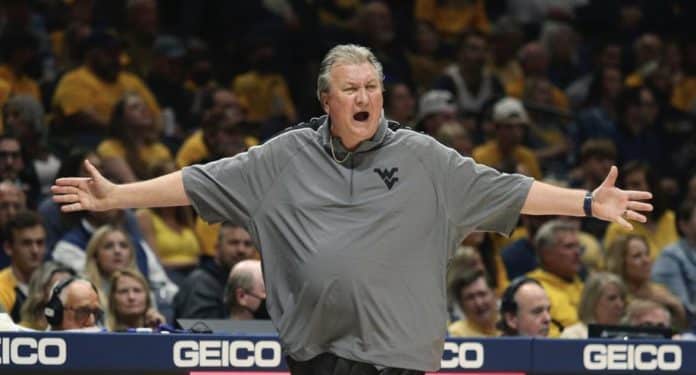
It shouldn’t have to be said, but WVU should be ranked. While the Mountaineers haven’t won “pretty” very often, they have been winning, and even though the schedule does not seem difficult on paper, WVU has faced 5 Q1 and Q2 (based on NET Rankings) opponents, which is as much or more than all but 4 teams that are ranked in the top 25. Based on RPI Rankings, WVU has as many or more Q1 and Q2 games than all but 6 teams in the top 25.


Before we dig into this, let’s talk about what Q1 and Q2 games are. To explain this, we’ll assume we are talking about a specific team called ‘Team A’. A Q1 game for ‘Team A’ would meet one of the following criteria:
- vs top 30 team (as ranked by NET or RPI) at Team A’s home court;
- vs top 50 team (as ranked by NET or RPI) on a neutral court; or
- vs top 75 team (as ranked by NET or RPI) on the road.
A Q2 game must meet one of the following criteria:
- vs a team ranked between 31-75 (as ranked by NET or RPI) at Team A’s home court;
- vs a team ranked between 51-100 (as ranked by NET or RPI) on a neutral court; or
- vs a team ranked 76-135 on the road
The quadrant ranking system has only been used for about 4 years and was introduced alongside the advent of the NET Rankings system. The NET Ranking system was designed to take into account more factors than RPI to be a better predictive model, both of which are better indicators of team talent level than polls. The quadrant ranking system can be used to easily measure a team’s skill level against others. For example, if Team A finishes a season 22-8 and Team B finishes 23-7, one could use the quadrant ranking system to differentiate between the two teams. If Team A has more Q1 and Q2 matchups and wins than Q2, it is likely that Team A would be the superior team.
So while WVU has as many or more Q1 and Q2 games than 76-84% of all teams ranked in the top 25 currently, does that mean they are better than all these teams? Well, let’s take a look at the winning percentage of the teams from the charts above:


Based on NET rankings, WVU has a higher winning percentage than all but 2 teams: Providence and Xavier. Based on RPI, WVU has a higher winning percentage than all but 6 teams, 3 of which are ranked in the top 10 (Baylor, Arizona, LSU, and USC). Now, this is not to mean that WVU is a top 10 team but being considered the 27th best team based on votes is absolutely ridiculous.
Based on our performance against Q1 and Q2 opponents, WVU should be a shoo in for the top 25, but it gets even more egregious. Q3 and Q4 games are games that top 25 team should be able to win without too much issue. These games meet one of the following criteria:
- Q3
- Home against 76-160
- Neutral against 101-200
- Away against 135-240
- Q4
- Home against 161-353
- Neutral against 201-353
- Away against 241-353
Needless to say, all of these games are against non-tournament teams, and all but home Q3 games are against teams that are unlikely to finish with an above .500 record. Losing to even one of these teams this early in the season should be good enough to tank someone’s out of the top 25, so there isn’t anyone in the top 25 with a Q3 or Q4 loss, right? WRONG. Here is a list of teams that are ranked above WVU (who is undefeated in Q3 and Q4 games currently) with a Q3 or Q4 loss:
- Kansas – Loss at home to Dayton (7-5; ranked 138 by RPI and 102 by NET)
- Note that Dayton is 3-3 in Q4 games
- Purdue – Loss on the road to Rutgers (5-5; ranked 130 by RPI and 150 by NET)
- Oklahoma (ranked 26th) – Loss at home to Butler (5-4; ranked 147 by RPI and 161 by NET)
Based on this information, these three teams are definitely overrated, but this overinflated ranking is based mostly on results from earlier in the season. It’s harder to drop someone completely out of the polls when they are ranked in the top 10 or top 5. Additionally, some of these early season wins don’t look so good any more. The exception to this Kansas, who beat Michigan State by double digits; Michigan State is a consensus top 15 team. However, the same arguments really can’t be made for Oklahoma or Purdue. Purdue’s best wins were against North Carolina (8-3; not in top 25; 49 in NET; 31 in RPI) and Villanova (7-4; ranked 23; 19 in NET; 27 in RPI), and these wins no longer carry the same weight as they did at the time. Oklahoma’s best wins were against Florida (8-3; not in top 25; 59 in NET; 102 in RPI) and Arkansas (9-2; not in top 25; 91 in NET; 75 in RPI), which makes these two wins close to not even being Q2 wins anymore. While it may be hard to argue that Purdue should drop out of the top 25 after one loss and being ranked over an unranked Oklahoma doesn’t really move the needle, it exposes a flaw in the voters’ logic.
Additionally, these aren’t the only issues with the rankings. Let’s look at teams with less quality opponents and a worse winning percentage in those Q1 and Q2 games than WVU:


Of these teams, I’d like to focus on 4: Houston, Tennessee, Texas Tech and Kentucky.
Houston is currently ranked 13th in the nation, largely based on reputation alone. They only have 2 Q2 wins and no Q1 wins. 8 of their 10 wins have come from Q3 and Q4 opponents, the likes of which included Northwestern State, Bryant, and Alcorn State who combine for a miserable 8-26. For comparison, 6 of WVU’s 10 wins are against Q3 and Q4 opponents, and the 3 worst opponents had a combined record of 11-24; this includes Pittsburgh, a Power 5 opponent. Additionally, WVU has 2 Q1 wins against UAB and UCONN. It’s hard to argue that the Cougars should be ranked as high as they are.
Tennessee has a slightly better story than Houston. They have one Q1 win, which was against North Carolina. However, it seems like North Carolina may be overrated this year, especially after their blowout loss to Kentucky (who we’ll talk about later). They also have one Q2 win over Colorado. However, that win is only a borderline Q2 win now that Colorado is 87 in RPI and 110 in NET heading into Pac-12 season, and they could struggle against a schedule that includes multiple matchups against top 15 teams. Another knock against Tennessee is that while they do have one Q1 win, they have two Q1 losses. These two losses were against Villanova (who advanced metrics say are still a quality team but record puts that in question) and Texas Tech (who we will talk about later). It is probably right that Tennessee is considered a top 25 team, but is their resume to date better than WVU’s?
Next, Kentucky. Based on name and press coverage alone, most people wouldn’t question Kentucky’s rankings. But I am, and for good reason. Kentucky has played 3 quality opponents. Their record in those games? One and two. 7 of their 8 wins are in Q3 and Q4 matchups, beating up on teams with much less talent and athleticism than Calipari’s team of top-tier recruits. Their only Q1 or Q2 win was against North Carolina, who as mentioned in the previous paragraph, is probably overrated. Their schedule to date is the weakest strength of schedule of any of the teams in the top 25. With all things considered, I think it’s safe to expect the Mountaineers to be ranked higher than Kentucky.
Finally, the Texas Tech Red Raiders. In their first year without current Texas Head Coach, Chris Beard, the Red Raiders have performed pretty well, relying almost solely on a stingy defense that ranks amongst the best in the nation, but like Kentucky, Texas Tech has not played a tough schedule to date. And when they have, the results have not gone in their favor. Like Kentucky, the Red Raiders have only played a combined three Q1 and Q2 opponents. Unlike Kentucky, though, these three opponents are legit top 25 teams: Gonzaga, Providence, and Tennessee. However in those three games, Texas Tech is only 1 and 2. The remainder of their wins are against two Q3 opponents and five Q4 opponents. Additionally, there is definitely a concern about how they will stack up in a loaded Big 12 this year. While the Red Raiders were averaging 88 points per game against those Q3 and Q4 opponents, that average has plummeted to 68 points per game in their last 5 games. Additionally, a defense that was only allowing 57 points per game against those same Q3 and Q4 opponents has now began allowing an average of 67 points per game in their last 5. For comparison, in all of WVU’s Q1 and Q2 games this season, they are allowing 61 points per game. For a Red Raiders team that is lauded for its elite defense, shouldn’t the Mountaineers get some love for their defense as well?
All in all, it is still early in the season. It is likely that WVU ends up ranked sometime during the season. If it were me, I would rank WVU somewhere in the 17-20 range. Coming into the year, there were a lot of question marks about how the team would perform with its top two players leaving for the pros and 7 new faces joining the team. Despite this adversity, Bob Huggins once again has this team competing and playing hard for wins. I don’t expect it to stop in conference play either. Barring injuries (knock on wood), this team should have no issues making the NCAA tournament, and despite the non-conference schedule not having much name recognition, it does contain a quality slate of opponents that vary in play styles. From “the team that doesn’t pass” to teams that rely almost exclusively on the three and teams whose strategy revolves around forcing turnovers, this Mountaineer team is getting invaluable experience this non-conference season. Even if the press does not acknowledge WVU’s success this season, we should all know and expect great things for the remainder of the season.
Listen to more of Brandon’s thoughts on the basketball season on the Voice of Motown Podcast. Listen below:






